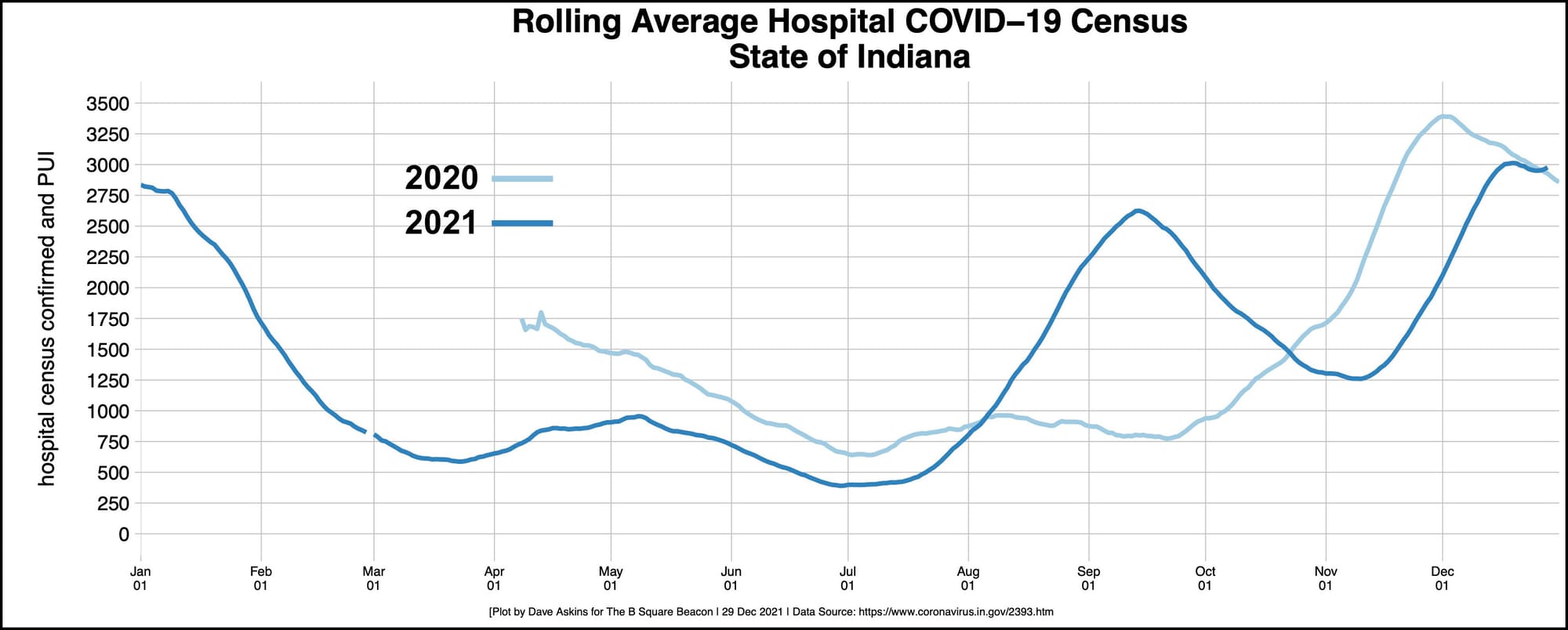COVID-19 update: Confirmed cases, hospitalizations same level as last year, Holcomb looks for help convincing Hoosiers to get jabbed




At a Wednesday afternoon news conference, Indiana governor Eric Holcomb announced he had extended his emergency health order another month.
It allows local units of government to impose their own more restrictive regulations to try to curb the spread of the COVID-19 virus. But the governor’s order does not itself include restrictions like a mask mandate.
Joining Holcomb at the news conference were Lindsay Weaver, the chief medical officer for Indiana’s department of health, and Kristina Box, the state’s health commissioner.
Box delivered a grim outlook at roughly the one-year mark for the arrival of the first COVID-19 vaccines in Indiana. “We once again are facing a very bleak situation with this pandemic. Our COVID-19 hospital census is at the highest level in an entire year,” Box said.
Despite the availability of the vaccine for a year, the situation now looks a lot like last year.
The rolling average hospital census of COVID-19 patients across the state stood at 2,958 on Dec. 26 last year, which is about the same as this year’s number, which is 2,952. The difference is that last year, the numbers were on the decline. This year, they’re flattish to upward.
It’s the same picture for confirmed numbers of cases. Last year on Dec. 26, the rolling average of confirmed positive tests statewide was 4,235, but dropping, just before another surge. This year, the rolling average on Dec. 26 was 4,122. Over the last two days, it has increased to 4,860.
Locally, it’s the same pattern. In Monroe County last year on Dec. 26, the rolling average of confirmed daily cases was 49. This year on Dec. 26 the rolling average of confirmed cases stood at 57, and it’s still climbing.
At Wednesday’s news conference, Box pointed to the emergence of the highly infectious Omicron variant, when she warned, “This situation will get worse before it improves.” Box based that conclusion on data from other countries where the Omicron surge is further along.
Box added, “We expect to see a very steep rise in cases over the next several weeks.”
Part of Wednesday’s Weaver’s message, aimed at persuading people to get vaccinated, included the fact that some of the therapies for those already infected with COVID-19 have proven to be ineffective against the Omicron variant. Those include the monoclonal antibody treatments Bamlanivimab and Etesevimab, made by Eli Lilly, and REGEN-COV, made by Regneron.
Other therapies are in short supply, Weaver reported.
Given that only 54 percent of eligible Indiana residents are vaccinated, Holcomb was asked by a reporter if there’s a new message for the new year that could help increase that figure.
Holcomb responded by saying “knowledgeable folks in the trenches” had told him, “Eric, you’re not going to get through to anyone else. You’re not going to convert anyone. Having said that, others can.”
Hocolmb elaborated on what he meant by “others” by saying, “We have to do everything we can to equip trusted, credible thought leaders within someone’s sphere of influence [with data and information]. And that’s how we’ll continue.”
Holcomb added, “If I can’t change your mind by now, it doesn’t mean I want to quit trying. But I’m also going to look for others to help. And that’s my appeal going into next year.”
Earlier in his remarks, Holcomb had made a direct appeal to those who might be able to influence others: “If you can appeal to folks who are skeptical of the efficacy of the vaccine, please do that. You may be the person someone trusts that’s holding out.”
Holcomb gave examples, “It could be at the Y. It could be a church. It could be if you play bridge with a group—who knows what the group is—but if you are a trusted individual in your cohort, you could make the difference in someone else’s family’s future.”




Comments ()